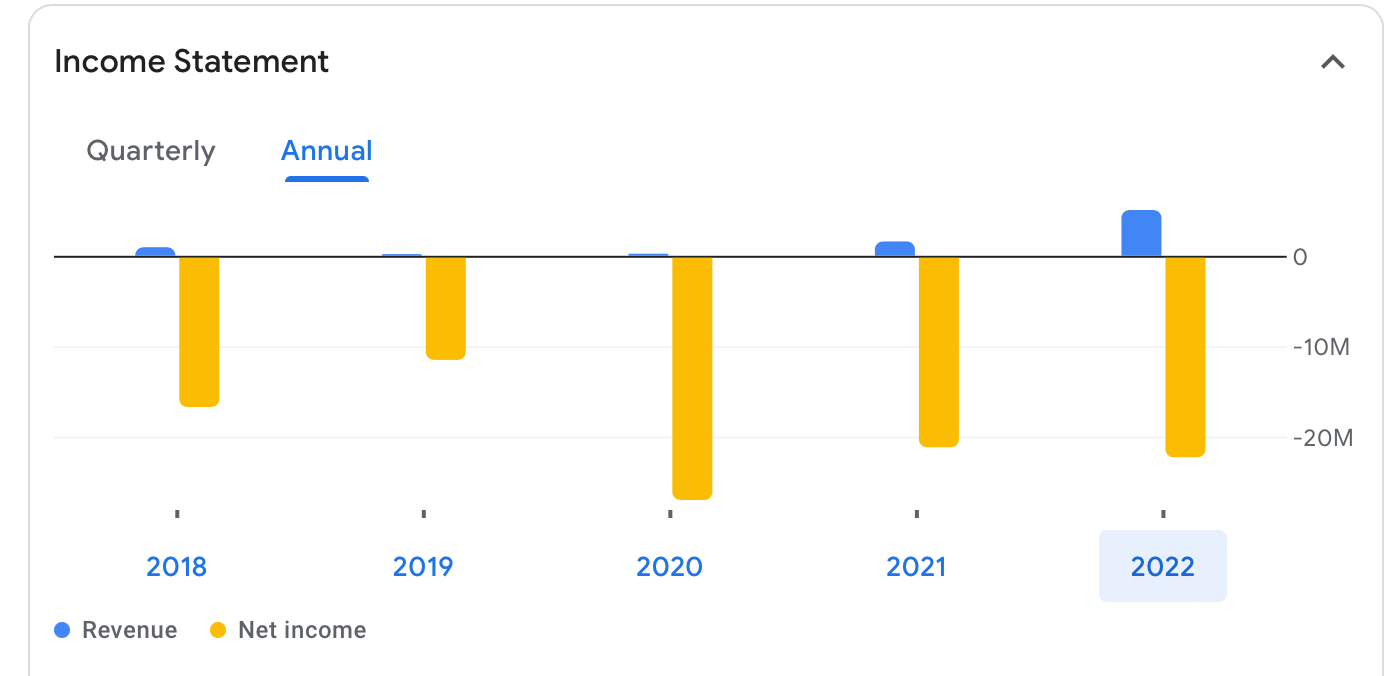Brainchip’s potential in Edge AI is undeniable, but can sales catch up with its cash burn?

Can Brainchip's sales gain traction before it runs out of cash? Picture Getty
- Brainchip is operating in the biggest megatrend today, AI microchips
- BRN’s shares have surged 200pc this year, but the company faces obstacles
- Can BRN’s sales gain traction before it runs out of cash?
The AI frenzy has taken over the market, but despite its huge potential for mankind, its ascendancy hinges on one critical factor – the evolution of microchips.
Microchips are the foundational infrastructure powering AI systems, and it is why stocks like Nvidia have tripled over the past year.
On the ASX, shares in neuromorphic microchips developer, Brainchip (ASX:BRN), have also been surging by almost 200% this year.
But the company’s shares plummeted 35% on Tuesday after the latest earnings showed that it was rapidly burning through cash,
Brainchip reported yet another full year loss – this time US$28.9 million – its sixth straight year of red ink after reporting annual losses since 2018.

The latest result is a stern reminder to investors that microchips is fundamentally a long term venture that’s fraught with short term obstacles.
One of the biggest challenges facing Brainchip, or microchip companies in general, is that it needs to continuously invest in research and development (R&D) in order to meet evolving market demands.
This includes constantly improving the performance of the chips, reducing power consumption, and enhancing their functionality – before the first sale can even be made.
Brainchip reported total expenses for the year of US$28m – of which US$7 million (or a quarter) alone were in R&D expenses.
Other costs include marketing expenses of $4.7m, and share-based expenses of $11m – which include performance payments, vesting options and other rights issued to its directors.
Against these expenses is revenue totalling just $0.2m for the year.
But what’s more troubling is Brainchip’s net operating cash flow, which has grown increasingly negative: from -$7.2m in 2018, to -$17.5m in 2023.
This cash burn has left Brainchip with a cash balance of just over US$14 million as at December 31.
Will this be enough to take Brainchip through this financial year?
“As always, I will closely scrutinise every dollar spent at BrainChip to ensure we optimise the value generated, while we work aggressively to commercialize our Akida technology,” said CEO, Sean Hehir.
The company has been cap raising, and it’s just received a fresh cash injection of around US$4m in January from LDA Capital through newly issued shares, as part of an agreement that allows LDA to invest up to 25 million shares in the company.
“While we will continue to be judicious with our use of cash, having access to funding from our well-respected partners at LDA Capital, strengthens our business continuity position against well-capitalised and more established competitors in a highly competitive market,” said Hehir.
Ticking the right boxes
As a business, there is no doubt that Brainchip ticks all the boxes in terms of where our world is heading toward:
1/ AI will be the great economic driver over the next decade
2/ The Edge AI market is fragmented and rapidly growing
3/ A novel computing approach will prevail
The company’s first-to-market neuromorphic processor, the Akida Neuromorphic System-on-Chip (NSoC), is a unique product in the field of neuromorphic computing.
While it may not be accurate to label it as the “world-leading” product in its category, the Akida NSoC still represents a significant advancement in the field of AI.
Neuromorphic computing differs from traditional computing architectures in that it aims to emulate the brain’s neural networks.
The Akida chip can basically mimic the way the human brain processes information, utilising spiking neural networks (SNNs) to perform tasks such as pattern recognition, classification, and inference.
Akida’s architecture offers advantages such as low power consumption, real-time processing capabilities, and suitability for edge computing applications.
And that’s exactly where Brainchip sees its future – in the Edge AI segment, which many believe could be the next big thing.
Edge AI is the future
Edge computing essentially enables data processing and analysis to occur closer to the source of data generation, reducing latency and improving efficiency, precisely what the Akida NSoC microprocessors were built for.
Akida is also capable of continuous learning – which allows its customers to create ultra-low power chips with the ability to incrementally add learn on-chips, without the need to retrain in the cloud.
This means the Akida chip can think with ultra-low power consumption, because it eliminates the power usage caused by communication between separate elements – which ultimately leads to reduction in costs.
And reducing processing costs could mean big bucks in the AI space.
“Whoever the winner is in this space, it’s going to be incredibly lucrative,” Merewether Capital founder and MD Luke Winchester, told Stockhead previously.
“You can see the hype around AI, anyone who can bring down the processing costs that will come from increased processing from AI, there’ll be billions and billions of dollars to be made,” he said.
That said, ultimately the biggest question for Brainchip is: can Akida sales gain traction fast enough before it runs out of cash?
The good news is, the company has recently accepted pre-orders of the Akida Edge AI Box, a product powered by the Akida NSoC chip, and was optimised for running AI algorithms at the edge.
“The Akida Edge AI Box is ideally suited to provide the low latency and high throughput processing with ultra-low power consumption – a necessity for the next generation of smart Edge devices,” said Hehir.
Sales of the Akida Edge AI Box is crucial for securing Brainchip with enough cash to fund the next level of its Akida development.
Can Brainchip capture this big opportunity?
Short term obstacles aside, the company does look to be in good hands.
It has a seasoned exec team including experienced CEO Hehir, and chief technology officer, Tony Lewis.
The company’s headcount includes 85% engineers and 15% Phds. Brainchip also has been granted 17 patents worldwide, with 30 more pending.
But fundamentally, what’s most important is that there is undeniable movement toward Edge AI.
From consumer robots, to intelligent appliances with intuitive human-machine interfaces (HMI), there is a concerted effort worldwide to integrate cost-effective Edge AI acceleration.
More importantly, Edge AI has a real demand for optimised, economical and specialised compute.
This is a strong driver for AI-focused companies globally to seek the best solutions to allow them to gain market share in this rapidly changing and ever-competitive market.
“This dynamic bodes very well for BrainChip alignment with where the market is headed, and where BrainChip is going,” said chairman, Antonio J Viana.
“All the hard work and investment over the last two years has put BrainChip in a position to succeed and we kicked off 2024 on a strong positive note.
“The robust relationships we have cultivated with product companies and OEMs over the last year have been extremely beneficial in our development,” said Viana.
Company share price today:
Related Topics
UNLOCK INSIGHTS
Discover the untold stories of emerging ASX stocks.
Daily news and expert analysis, it's free to subscribe.
By proceeding, you confirm you understand that we handle personal information in accordance with our Privacy Policy.







